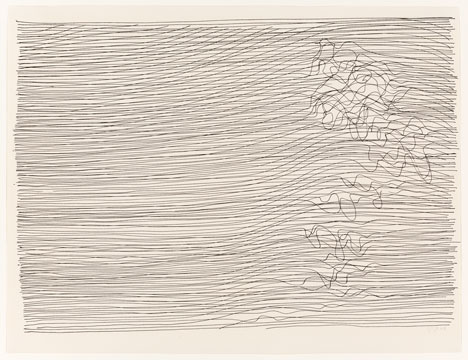Abstract Experiments: Latin American Art on Paper after 1950
@ The Art Institute of Chicago
111 S Michigan Ave, Chicago, IL 60603
On view through Sunday, May 7th
During the mid-20th century, Latin American artists were active in the evolving international discourse on modernity, expanding upon these debates in light of localized conditions and concerns. Their work resulted in original and hybrid aesthetic strategies, responding to the industrial expansion that colored the social and economic conditions in South America following World War II and to the political transformations of the time. This exhibition, drawn primarily from the Art Institute’s permanent collection, explores this pivotal period in the development of abstraction in South America.
Established in 1944, the Buenos Aires–based Asociación Arte Concreto-Invención favored pure geometric abstraction, inspired by early 20th-century European artists. Prints by founding members Alfredo Hlito and Manuel Espinosa represent the aesthetic goals of the group, a style of Argentine constructivism animated by utopian idealism and Marxist politics. Prints by Carlos Cruz-Diez and Manuel Espinoza illustrate what came to be known as Venezuelan kineticism; Cruz-Diez and his contemporaries were searching for an egalitarian form of art based in perceptual manipulation through additive color experiments. In Brazil, the Neo-Concreto movement—as exemplified by Lygia Clark and Lygia Pape, associates of Hélio Oiticica—advocated a version of concretism that embraced color, sensuality, and poetry while challenging the very idea of the object itself.
The exhibition also includes the work of two European-born Jewish émigrés, Gertrud Goldschmidt, professionally known as Gego, and Mira Schendel, who were based in Venezuela and Brazil, respectively, as well as the work of Leon Ferrari, an Argentine who lived in exile in Brazil from 1976 to 1991. All three explored the expressive possibilities of line, but their work shares more aesthetically than conceptually. Ferrari was decidedly the most political, while Gego was more concerned with form and volume; Schendel’s work explores the relationship of language and art and suggests the shortcomings of the spoken and written word.
Providing an illuminating complement to Hélio Oiticica: To Organize Delirium, this exhibition also reflects recent efforts by the Art Institute to expand its holdings of Latin American painting, sculpture, and works on paper.
Official Website
More events on this date
Tags: Abstract Experiments, Chicago, Latin American Art on Paper after 1950, Loop, The Art Institute of Chicago

« previous event
next event »